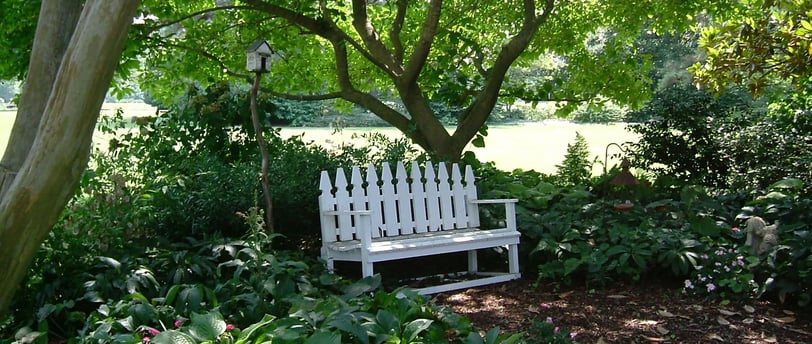Under the Tree: Learning to Garden with Shade, Not Against It
A thoughtful reflection on the challenges of gardening beneath trees. Marcus shares personal insights from his own garden, explores why plants often struggle in dry shade, and offers practical, gentle ways to work with—not against—the conditions under mature trees.
Marcus Bergin
5/27/20252 min read


(A quiet reflection on dry shade, disappearing plants, and changing expectations)
You know the spot I mean.
That patch beneath the old tree—too dry, too shady, too rooty.
A place where grass gives up, mulch gets kicked aside, and every hopeful planting seems to vanish by midsummer.
I was there again this week, trimming back an overgrown Viburnum plicatum. The layered branches of ‘Mariesii’ arch like ribs over clay-heavy soil, and as I reached in with the secateurs, I paused. Didn’t I plant something here last year?
I could picture it—maybe some hardy geraniums, possibly a Brunnera or two. But now… nothing. No sign they’d ever been there.
It got me thinking—not just about what went wrong, but about how often we try to change these places, when really, the garden is asking us to listen.
The urge to fix vs. the wisdom to adapt
When we see bare ground, we instinctively reach for solutions.
More plants. More compost. More effort.
And sometimes, that’s right. But not always.
Under a mature tree, you’re working within a system already in motion. The roots dominate. The canopy limits light. Moisture barely settles before it’s drawn up into branches. You’re not planting in a blank canvas—you’re weaving into a living tapestry that’s already got its rules.
What I’ve learned to do instead
I’ve stopped seeing it as a problem to solve. Instead, it’s become a place for gentle experiments—and sometimes for letting go.
Here are a few quiet truths I’ve picked up:
Soil matters more than planting
If the soil’s tired and compacted, don’t dig. Lay down compost, leaf mould, or fine bark in thin layers. Let the worms and time do the rest. Autumn is perfect for this—nature lends a hand.Go with the tree, not against it
Choose plants that want to be there. On clay, in shade, with roots in competition, look to:Geranium macrorrhizum – evergreen, scented, and stubbornly cheerful.
Brunnera macrophylla – especially silver-leaved forms for light and lift.
Epimedium, Ajuga, Pulmonaria, and even Dryopteris ferns—all quietly effective, all adapted to low fuss and low light.
Design differently
Not every space needs filling. Sometimes a mulch ring and a low bench do more than a bed full of plants ever could. Sometimes restraint is the boldest gesture.
A different kind of gardening
We talk a lot about colour, abundance, bloom.
But gardening under trees is quieter than that. It’s about noticing small shifts—a frond unfurling, the way silver leaves shimmer in early morning light, the silence of a space no longer demanding to be more than it is.
It’s not failure. It’s maturity. It’s learning to partner with the garden, rather than manage it like a project.
If you’ve got a patch like this—dry, shaded, a little mysterious—I encourage you: don’t rush to fix it. Sit with it. Observe. Imagine what it could be if you stopped trying to turn it into something it’s not.
That’s where the real beauty lives.
Looking for plant suggestions tailored to dry shade?
Or tune in to The Shade Gardening Podcast where we explore the art of embracing difficult spaces, one leaf-layered corner at a time.
See you back under the tree soon.
—Marcus